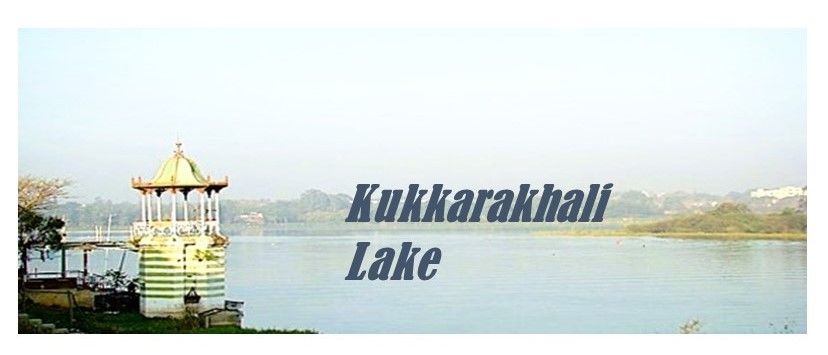
Set in the heart of the historic city of Mysuru, Kukkarakhali Lake is not only a testament to 19th-century engineering but also a living reminder of the fragile relationship between urban development and ecological preservation. Constructed in 1864 under the patronage of Mummadi Krishna raja Wodeyar, a ruler of the Mysore Dynasty, the lake was originally intended to irrigate nearly 10,000 acres of agricultural land. Today, Kukkarakhali Lake remains an iconic urban wetland that continues to inspire environmentalists, ornithologists, and nature-loving tourists.
Historical Significance and Origin
The creation of Kukkarakhali Lake over 150 years ago was a visionary project aimed at fulfilling the dual purpose of irrigation and potable water supply for Mysore. Spanning an area of 150 acres with a shoreline stretching approximately 5 kilometers, the lake once supported an expansive network of agricultural fields. At its deepest point, The Lake reaches 16 feet, and it’s still waters once reflected the city’s commitment to sustainable living and harmony with nature.
Over time, however, The Lake fell prey to rapid urban expansion, leading to land encroachments, sewage inflow, and the blockage of feeder canals. These stressors culminated in a phenomenon known as eutrophication, where an excess of nutrients like nitrogen and phosphorus stimulated the uncontrolled growth of algae and plankton, depleting the lake's oxygen content.
Hydrology and Environmental Decline
The geological makeup of the Kukkarakhali catchment ranges from sandy loam to clayey loam, allowing it to drain an expansive 414-square-kilometer area. The lake was once recharged by the Dewan Poornaiah feeder canal, which originally extended 27 kilometers through regions such as Hinkal, Bogadi, Kudremala, and Manasagangotri before flowing into the lake.
Over the years, urbanization significantly shortened the canal to a mere 5 kilometers, drastically affecting the natural inflow. Furthermore, a bund system was constructed on the eastern and western sides to maintain water levels, with a temporary bund to the north aimed at stalling the influx of untreated wastewater. Unfortunately, studies conducted between 1981 and 2001revealed a steady deterioration in the lake's water quality, characterized by:
· High biochemical oxygen demand (BOD)
· Reduced dissolved oxygen levels
· Abundant algal blooms
· Excessive nutrient content
· These indicators pointed to a distressed ecosystem on the brink of collapse.
· Restoration and Revitalization
Recognizing the urgent need for conservation, a series of restoration efforts were launched, beginning around 2004. Environmental experts proposed the installation of rainwater harvesting systems in nearby heritage structures and collaborated with the University of Mysore and the Karnataka State Government to devise a sustainable recovery strategy.
· Among the restoration methods adopted were:
· Algae and weed clearance by university teams
· Introduction of a sand-sucking boat to remove decaying biomass
· Chemical treatment to neutralize foul odors along the bund near Hunsur Road
· Diversion of sewage outflow with assistance from Mysuru City Corporation
· Fencing of the lake perimeter to prevent further encroachment
· Bans on idol immersion and biomedical waste dumping
· Promotion of aquaculture and controlled boating to oxygenate the waters
· These efforts have not only improved the lake's aesthetics but are gradually restoring its ecological balance.
A Haven for Biodiversity
Kukkarakhali Lake is a vibrant hub of urban biodiversity, boasting over 180 species of birds, including numerous migratory and aquatic varieties. During the migratory season, the lake transforms into a birdwatcher’s paradise, attracting rare and exotic species such as:
· Spot-billed Pelican
· Eurasian Spoonbill
· Oriental Darter
· Painted Stork
· Black-crowned Night Heron
· Little Cormorant
· Asian Open Bill Stork
This thriving avian population has earned the lake recognition by Birdlife International, which listed it among the 38 Important Bird Areas in Karnataka, underscoring its ecological significance not just locally but regionally.
A Natural Retreat Within the City
Located within easy reach of the Mysuru city center, Kukkarakhali Lake serves as a peaceful green escape from the urban bustle. It lies just 3 kilometers from Mysuru Railway Station and is accessible from all major neighbourhoods. The picturesque walking trails that encircle the lake attract joggers, morning walkers, fitness enthusiasts, and photographers who find endless inspiration in its tranquil waters and vibrant wildlife.
Nature lovers and tourists visiting Mysuru often find Kukkarakhali Lake to be an ideal pit stop in their itinerary a place to unwind while also reflecting on the importance of environmental responsibility. Although Mandakalli Airport is around185 kilometers away, regional connectivity and reliable public transport make this serene lake easily accessible to both domestic and international travelers.
Conclusion: Balancing Progress and Preservation
Kukkarakhali Lake stands today not only as a scenic urban retreat but also as a Symbol of Ecological resilience. Its story is a cautionary tale on how unchecked urbanization can degrade even the most resource-rich ecosystems. Yet, it also offers hope that collective civic action, backed by scientific insight and community support, can restore and even enhance what was once lost.
Mysuru efforts to rehabilitate this iconic lake serve as a blueprint for other Indian cities grappling with shrinking wetlands and biodiversity loss. As India walks the path of modernization, places like Kukkarakhali remind us that nature and progress can, and must, coexist.